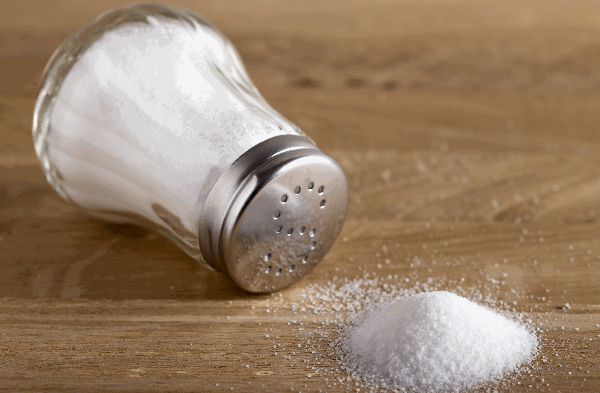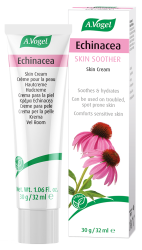An introduction to oily skin and diet
The notion that ‘you are what you eat’ is definitely starting to resonate in our collective consciousness and this definitely isn’t a bad thing when it comes to your skin. It relies on a delicate balance of nutrients to function properly and, deprivation of these nutrients coupled with poor lifestyle habits, can cause serious consequences.
This is especially true of oily skin, even if inherited factors are to blame. The wrong foods or lifestyle habits can definitely take their toll, triggering your sebaceous glands to produce more sebum oil, exacerbating your problem! That’s why I’m here to discuss what nutrients you should be including in your diet and the habits that might be causing your oily skin woes.
The best nutrients for oily skin
Not getting enough of the right nutrients can certainly impact your oily skin symptoms, with low levels of vitamin A and B2 sometimes being linked to the problem. It’s important to note that the nutrients listed below are my personal top 4 – ideally your diet should contain a wide variety of vitamins and minerals, including vitamin E and selenium.

Vitamin A
When it comes to the overall health of your skin, vitamin A is one of the most important nutrients to have in your diet. It’s often recommended to increase your intake if you have acne-prone skin and, since oily skin is often linked to acne, it’s also particularly relevant here.
Vitamin A helps to encourage healthy cell production and even works to unclog your pores, preventing symptoms such as spots and pimples. Retinol, the activated form of vitamin A, can even bind to your retinoid receptors, which are linked to your sebaceous glands, inhibiting your production of sebum oil.
Biotta’s Carrot Juice provides an excellent source of vitamin A and offers a variety of benefits for your skin, including protecting it from UV radiation!
Best sources: Kale, spinach, sweet potatoes, carrots, apricots, tuna
Recipes:
Broccoli, Kale & Sweet Potato Soup with Fitness Mix Sprouts
Vitamin B2
Sometimes known as ‘riboflavin’ vitamin B2 deficiency is often linked to oily skin, although low levels of B2 are uncommon in Western countries like the US and UK. You need vitamin B2 to help maintain your energy levels and metabolism, although it can also work to ward off oxidative stress and increase healthy skin growth, even cleaning up pustules associated with acne!1
In addition to these incredibly important functions, you need vitamin B2 to keep your immune system healthy and it also helps to increase your ability to absorb certain nutrients such as iron and vitamin B1.
Best sources: Almonds, spinach, sun-dried tomatoes, eggs, salmon
Recipes:
Sun-dried Tomato & Hemp Quiche
1https://www.organicfacts.net/health-benefits/vitamins/health-benefits-of-vitamin-b2-or-riboflavin.html
Vitamin C
The most famous vitamin when it comes to promoting skin health, vitamin C is a great all-rounder, preventing premature ageing, promoting the production of collagen and warding off nasty free-radicals. In general, I would recommend getting as much of this nutrient into your diet as possible, especially when you consider its role in the immune system and iron absorption.
When it comes to oily skin, it’s vitamin C’s action against free-radical damage that is particularly of interest. Free radical molecules can be created by pollutants and environmental stressors such as UV radiation. They damage healthy skin cells, deprive your skin of vital nutrients and can even affect the sebum oil on your face, transforming a key component, squalene, into squalene peroxide which can increase your production of sebum oil.2
Best sources: Tomatoes, papaya, pineapple, oranges, spinach, kale
Recipes:
2http://supernaturalacnetreatment.com/free-radicals-and-acne-how-to-avoid/
Zinc
Zinc is an essential but often forgotten about nutrient that has a number of different functions within your body, ranging from your nervous system to your skin. Similar to other nutrients, it can help to fight free-radical damage and encourage the growth of healthy skin cells. However, zinc has an added benefit as it can help to reduce your production of sebum oil.
It does this by helping your skin to oxygenate itself, plus it’s capable of controlling inflammation, reducing any redness or swelling and diminishing your chances of experiencing a breakout. As I discuss in my blog ‘Is zinc the best mineral for acne?’ this nutrient provides a lot of benefits for your skin so it’s really important that you meet your recommended daily intake.
Best sources: avocados, spinach, chickpeas, pumpkin seeds, mushrooms
Recipes:
Potato Bake with Avocado, Mushrooms and Seeds
Foods that may upset your symptoms
I’ve talked about the nutrients you should be trying to include in your diet, but what about the foods that may potentially exacerbate your symptoms and trigger your sebaceous glands? It’s possible that some of the foods on this list won’t be all that surprising to you but still, it’s important to remember moderation. I’m not suggesting that you can never consume any of these food products ever again, but it’s still essential to monitor your intake and keep your diet balanced.

Salt
Salt is everywhere at the moment, especially is processed foods, but it also creeps into dishes you wouldn’t expect, such as sauces, spreads or even baked potatoes. Now in small amounts, salt isn’t necessarily a bad thing and, according to NHS guidelines, adults should eat no more than 6g of salt a day or around a teaspoonful. The problem is that our average daily intake in the UK is around 8.1g-8.8g a day3 which is far too much, especially if you suffer from oily skin. Too much salt can cause water retention, tricking your body into thinking it’s in a state of dehydration. When this happens, your sebaceous glands will instinctively produce more sebum oil to compensate for any dehydration, exacerbating your symptoms.
3https://www.food.gov.uk/northern-ireland/nutritionni/salt-ni/salt-targets
Sugar
Sugar is infamous for its effects on your blood sugar levels so it’s hardly surprising that it’s found its way on to this list. When high blood sugar levels trigger an insulin spike this can be bad news for your hormones and, by extension, your sebaceous glands. This is because high levels of insulin can cause inflammation and stimulate your sebaceous glands, encouraging them to release more oil. As a result, your skin ends up oilier and more inflamed, making it vulnerable to breakouts and acne.
Refined grains
Refined carbohydrates such as white bread, pasta and rice earn their place on this list for similar reasons to sugar. These foods tend to have a high glycaemic index, which means that they are capable of quickly raising your blood sugar levels and potentially causing an insulin spike. There are also fewer vitamins and minerals in these food products compared to their complex counterparts so you’re not getting the nutrients you need.
Dairy
Described as the ‘perfect food for acne’ dairy doesn’t have the best relationship with oily skin either. This is mainly due to the presence of IGF-1, a growth hormone that is sometimes present in cow’s milk. IGF-1 can encourage the production of sebum oil and even have an inflammatory effect on your skin so it might be worthwhile lowering your intake of dairy or switching to organic milk, which contains fewer artificial hormones and antibiotics.








